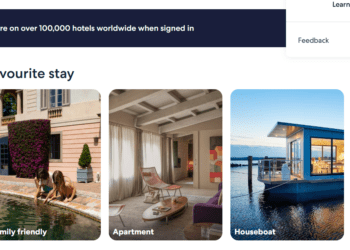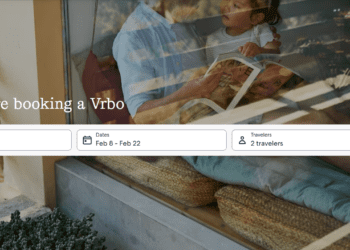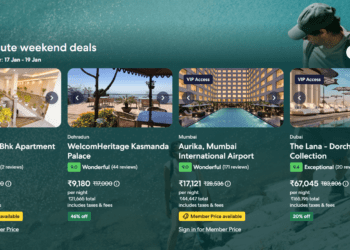Welcome, fellow bloggers and aspiring content creators! Are you ready to unlock the full potential of your blog? In today’s digital age, having a successful blog goes beyond just writing good content. It requires strategic planning, engaging writing techniques, SEO know-how, social media savvy, and the ability to track and analyze performance. Join us as we delve into expert tips and tricks to maximize your blog’s reach and impact. Let’s elevate your blogging game together!
Identifying Your Target Audience
Understanding your target audience is the cornerstone of a successful blog. Start by defining who your ideal readers are – their demographics, interests, and online behavior. Dive deep into what motivates them, what challenges they face, and how your content can provide value to them. Conduct surveys or analyze data to gather insights on their preferences and needs.
Once you have a clear picture of your target audience, tailor your content to speak directly to them. Craft posts that resonate with their interests and address topics they care about. Use language and tone that aligns with their communication style.
Engage with your audience through comments, polls, or social media interactions to build relationships and foster loyalty. Continuously monitor feedback and adjust your content strategy accordingly to keep attracting and retaining your target readership.
Creating Quality Content: Tips for Writing Engaging Blog Posts
When it comes to creating quality content for your blog, one of the key tips is to know your audience. Understanding their interests, preferences, and pain points will help you tailor your posts to resonate with them. Researching trending topics in your niche can also provide valuable insights into what content will capture your readers’ attention.
Another tip for writing engaging blog posts is to focus on storytelling. People connect more with stories than plain facts, so weaving narratives into your posts can make them more relatable and memorable. Adding personal anecdotes or case studies can add depth and authenticity to your content.
Incorporating visuals such as images, infographics, or videos can enhance the visual appeal of your blog posts and break up large chunks of text. This not only makes your content more visually appealing but also keeps readers engaged throughout the post.
Don’t forget about the importance of formatting. Use subheadings, bullet points, and short paragraphs to make your content easier to read and digest. Additionally, proofreading for grammar errors and typos before publishing will ensure that your writing appears polished and professional.
Utilizing SEO Techniques to Increase Visibility and Traffic
Are you looking to boost your blog’s visibility and attract more traffic? Utilizing SEO techniques can make a significant difference in reaching a larger audience.
Start by conducting keyword research to identify relevant terms and phrases that your target audience is searching for. Incorporate these keywords strategically throughout your content to improve search engine rankings.
Optimize your blog posts with meta titles, descriptions, and alt tags for images. This will help search engines understand the context of your content better.
Focus on creating high-quality, valuable content that resonates with your readers. Engaging posts are more likely to be shared across social media platforms and generate organic traffic to your blog.
Utilize internal linking within your blog posts to guide visitors to other related articles on your site. This not only enhances user experience but also improves SEO rankings.
Stay updated on SEO trends and algorithm changes to adapt your strategy accordingly. Consistent monitoring and adjustments will ensure sustained growth in visibility and traffic for your blog.
The Power of Social Media in Promoting Your Blog
Social media has become a powerful tool for promoting blogs and reaching a wider audience. Platforms like Instagram, Twitter, Facebook, and Pinterest allow bloggers to share their content with thousands of potential readers at the click of a button.
By creating engaging posts that resonate with your target audience and incorporating relevant hashtags, you can attract new followers who are interested in your niche. Sharing blog updates regularly on social media helps keep your audience informed about your latest content and encourages them to visit your site.
Utilizing features like Stories on Instagram or live videos on Facebook can give your followers a behind-the-scenes look at your blogging process, making them feel more connected to you as a creator. Encouraging shares and likes on social media not only boosts engagement but also increases the visibility of your blog across different platforms.
Engaging with your followers through comments and messages shows that you value their feedback and creates a sense of community around your blog. Collaborating with influencers or other bloggers in your niche can further expand your reach and introduce new audiences to your content.
Remembering to analyze the performance of each post using social media analytics tools can help you understand what resonates best with your audience and tailor future content accordingly. Building relationships with fellow bloggers by sharing their content or participating in group collaborations can also help increase exposure for both parties involved.
Incorporating social media into your overall blogging strategy is essential for growing an online presence and driving traffic to your site. By consistently sharing valuable content, engaging with followers authentically, and leveraging different platforms effectively, you can maximize the power of social media in promoting Your Blog!
Tracking and Analyzing Your Blog’s Performance
Tracking and analyzing your blog’s performance is essential in understanding what resonates with your audience. Utilizing tools like Google Analytics can provide valuable insights into your traffic, engagement, and conversions. By monitoring key metrics such as page views, bounce rate, and time on site, you can identify trends and areas for improvement.
Pay attention to which topics or types of content generate the most interest from your readers. This data can inform future content strategy and help you tailor your posts to better meet their needs. Additionally, tracking referral sources can show you where your traffic is coming from – whether it be social media, search engines, or other websites.
Experimenting with different posting schedules or promotional strategies can also impact your blog’s performance. By testing various approaches and analyzing the results, you can optimize your efforts for maximum impact. Remember that consistency is key when it comes to tracking and analyzing data – regular monitoring allows you to stay informed about what’s working well and what may need tweaking.
Monetizing Your Blog: Turning Your Passion into Profit
As you continue to grow your blog and build a loyal audience, you may start considering ways to turn your passion into profit. There are various strategies to monetize your blog, such as affiliate marketing, sponsored content, selling digital products or services, and displaying ads.
Remember that monetizing your blog should not compromise the quality of your content or alienate your audience. Transparency is key when it comes to sponsored posts or affiliate links. Always prioritize providing value to your readers and maintaining their trust.
With dedication, consistency, and strategic planning, you can leverage the potential of your blog to generate income while doing what you love. Keep experimenting with different monetization methods until you find what works best for both you and your audience.
Maximizing Your Blog’s Potential requires time, effort, and continuous learning. Stay committed to creating valuable content for your target audience, optimizing it for search engines’ visibility, promoting it through social media channels effectively tracking its performance using analytics tools—and eventually turning it into a sustainable source of income. Good luck on this exciting journey!






















